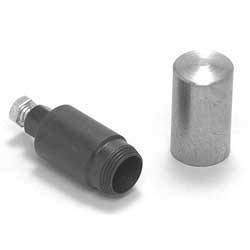You'll like it Steve. Just follow the instructions that come with it. The new gasket you mention is the latest creation from Mother Mopar. Good but that one leaked on me too. A '62 727 transmission in my '61 behind the 440. 3 different gaskets with the original '62 pan glued and dry and it still leaked. New pan from Mancini Racing and 3 more gaskets glued and dry and same result, still leaked. Invested in a deep B&M aluminum pan. Hung it and noticed that it was 'bout 3" lower then the center link. Un-hung it and took it to a machine shop and had them carve 2 1/2"s horizontally out of the middle. Then took it to my favorite welder person and had him do his magic and run 2X360* beads inside and outside making it whole again. Then one more trip back to the machine shop for the final flattening of the mating surface on the bridgeport. Pretty red gasket (Made of Silicone BTW) Torq to 25 "lbs....NOOOOO MORE LEAKZ, Jer


















